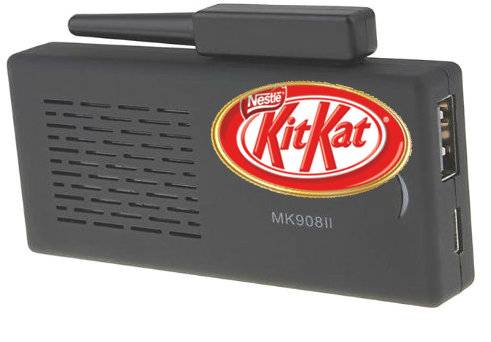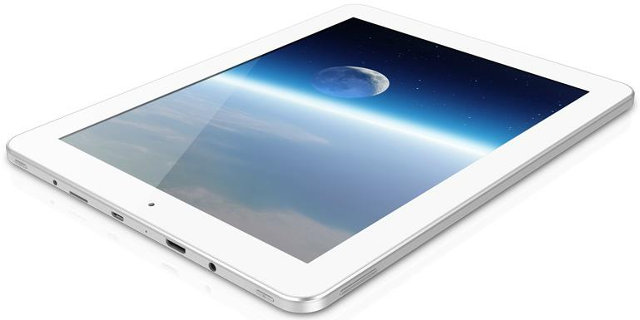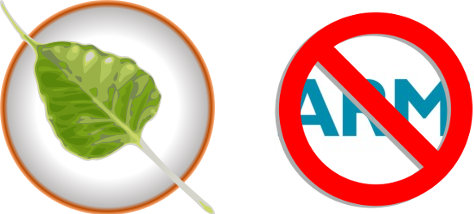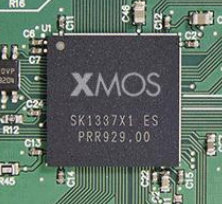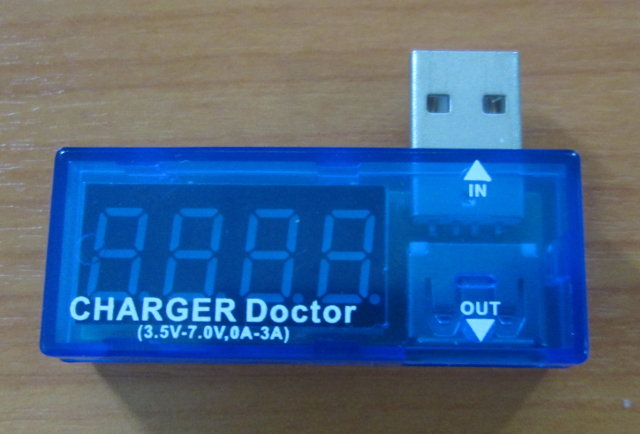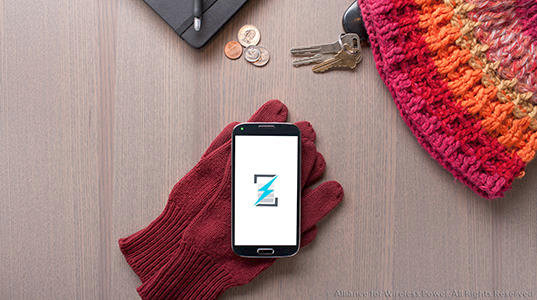This is the last day of the year, and just like in 2012, I’ll look back on the main trends of this year, post a list of the top 10 posts of 2013 on cnx-software.com, and add some fun stats about the site and my visitors. 2013 has been the year of quad core media players and mini PCs, especially those based on Rockchip RK3188, XBMC is now featured in many Android STBs, “big.LITTLE” and “Octa-core” have been the buzz words on the application processor front, Google has entered the HDMI TV sticks market with the ChromeCast, and is competing with Miracast / DLNA TV dongles, we’ve gotten more and more low cost Linux development boards, crowdfunding has almost gone mainstream, and the Internet of things has started to take off thanks to new technologies such as Bluetooth Low Energy. I’ve compiled the list using data from Google Analytics, filtered […]
Android 4.4.2 KitKat SDK Released for Rockchip RK3188 mini PCs: MK908, MK908 II, MK918 and A9
Shenzhen AW Technology Co Ltd, a company specializing in home entertainment equipment development, manufacturing, and sales, has just informed me they’ve released Android 4.4.2 SDK (Software Development Kit) for four Rockchip RK3188 devices, namely MK908, MK908 II, MK918, and A9. If you’ve never heard about A9, it looks very similar to the upcoming ZERO Devices Z6C. The four SDKs are available in the download page which links to baidu.com as follows: MK908 Android 4.4.2 SDK – password: lvlb MK908 II Android 4.4.2 SDK – password: wpwa MK918 Android 4.4.2 SDK – password: kafo A9 II Android 4.4.2 SDK – password: f1zb Each download section is composed of three files. For MK908, we’ll get: rk3188_4.4.2_without_kernel_20131230.tar.gz (3.85GB) – The Android SDK itself without Linux kernel readme.txt kernel_mk908_20131230.tar.gz – The kernel source code I haven’t completed the download yet, but the readme explains how to use build Android, and flash the SDK: After […]
Archos Unveils “Connected Objects” Home Automation and IoT Systems
There has been many home automation and Internet of things projects featured on crowdfunding sites this year, and IoT products such as smartwatches, fitness bands, smart sockets, connected lights… have started to take off. Archos plans to leverage this trend with their Connect Objects offerings divided in two parts: Connected Home and Connected Self. Archos Connected Home Archos Smart Home is a system that let you monitor and control your home via your smartphone or tablet using the company’s Smart Home App and Connected Objects. The set will come with a 7″ tablet, a mini cam, a USB data cable and documentation. It’s not clear right now if others objects: motion ball, weather tag, movement tag, and smartplug, will be part of the set or need to be purchased separately. Key features of Smart Home Tablet: SoC – Rockchip RK3168 dual core Cortex A9 processor with Mali-400MP4. System Memory – […]
Ainol Novo9 FireWire Ⅱ Tablet Features Actions Semi ATM7039 Quad core Cortex-A9r4 SoC
Ainol Novo9 FireWire II (aka Spark II?) is a new Android Jelly Bean tablet powered by ATM7039, a new quad core processor from Actions Semiconductor, that is said to feature Cortex A9r4 cores, just like AMLogic M802, that allow higher frequencies, and lower power consumption compared to Cortex A9r3 cores used in SoCs such as Rockchip RK3188. I’ll check the tablet specifications first, and then have a closer look at the new SoC. Ainol Novo9 FireWire II Tablet Ainol Novo9 Firewire II / Spark II Specifications: SoC- Actions Semi ATM7039 Quad Core ARM Cortex A9 up to 1.5/1.6 GHz with PowerVR SGX544MP2 GPU System memory – 2GB RAM Storage – 16GB + micro SD card slot (up to 32GB) Display – 9.7″ IPS capacitive touchscreen, 2048×1536 resolution Connectivity – Built-in Wi-Fi 802.11b/g/n, built-in Bluetooth 4.0, and 3G via external USB dongle Video Output – HDMI Audio I/O – 3.5mm audio jack, […]
Bodhi Linux Distribution Has Dropped Official ARM Support (For a While)
Linux is omnipresent in your life via gadget running Android, but in the desktop world, as many of you already know, it’s not straightforward to get a Linux distribution fully work on ARM platform, because each ARM SoC or board is different, and above all binary blobs used for GPUs, VPUs, Wi-Fi and Bluetooth chips can make it extremely complex, even impossible, to have a fully working ARM Linux distribution for a given hardware. After considering that ARM Linux required too much effort, and was not used by many people, Bodhi Linux developers decided to call it a day in October this year, and dropped official support for ARM hard-float images: Effective immediately Bodhi is dropping official support for ARM devices. What does this mean? We will no longer be advertising an ARMHF download link on our front page Updates to ARM images will be infrequent/not at all. The ARM […]
XMOS xCORE-XA Octa-core ARM Cortex-M3 SoC and $14.99 StartKIT Board
XMOS is a fabless semiconductor company that specialized in multicore MCUs that delivers scalable, parallel multitasking compute, which are used in embedded applications for consumer, industrial and automotive markets. They’ve recently announced xCORE-XA (eXtended Architecture), their first MCU based on ARM technology with one ARM Cortex M3 core, and seven xCORE core, as well as a low cost development board called XMOS StartKIT featuring xCORE-A (Analog) with eight cores. XMOS xCORE-XA SoC xCore-XA is actually an octa-core MCU with the following key features: Eight 32bit processors – seven xCORE logical cores supporting DSP instructions, and an ARM Cortex-M3 processor (up to 500 MIPS in total) On-chip Memory – 192KB SRAM, and 512 or 1024KB SPI Flash depending on model. 38 I/O including I2C, SPI, ADC, DAC, op-amps, capacitive sensing comparators, and optional USB 2.0 interface. Hardware response ports – Eliminate the need for interrupts and provide up to 100x faster […]
$5.40 CHARGER Doctor Makes USB Power Measurements Easy
One way to make power measurement for USB powered devices is to make your own USB cable to allow for current measurement via a multimeter, but if you think it’s just too much hassle, I’ve found and purchased a small test device called CHARGER Doctor that shows voltage and current on a 4 digit display, and sells for $5.40 on DealExtreme. The device features a USB female out port, and a USB male input port, that you can place between your USB power adapter, and the cable to your device to alternatively display voltage (4 seconds) and current (9 seconds). It can be used for power consumption measurements, to test if your charger is working normally, or finding out the power adapter that will charge your phone the fastest. It’s said to support measurement between 3.5 to 7V and 0 to 3 A, with an accuracy of +/- 1%. I’ve […]
Rezence Wireless Charging Standard Gets Rid off Charging Pads, Leverages Bluetooth 4.0 LE
I’ve just found out via my twitter feed that Nordic Semiconductor had announced the availability of the Bluetooth LE-based S120 8-link central protocol stack and nRF51 Wireless Charging SDK for wireless charging applications based on a new wireless charging standard called Rezence. The Alliance for Wireless Power (A4WP) gave their wireless power technology the name Rezence a couple of weeks ago. Rezence uses magnetic resonance, instead of inductance used in first generation products, and bring several key improvements: Greater charging range – Your device does not need to be placed on a charging pad, but it can be placed anywhere within range (I could not find data yet). Multiple device charging – Ability to charge multiple devices with different power requirements at the same time, such as smartphones, tablets, laptops and Bluetooth headsets. Up to 8 devices with Nordic Semi solutions mentioned in the introduction. Ready for the real world […]



